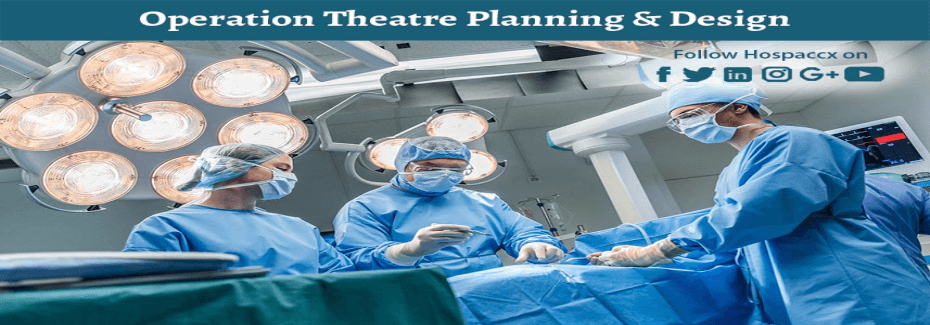Operation Theater checklist and quality indicators for NABH accreditation preparation
Operation Theater checklist and quality indicators for NABH accreditation preparation

One of the most difficult area to prepare for accreditation is operation theater. It’s a complex department where multiple critical function happens and many categories of staff are involved. Besides, infrastructure of OT is also very important for accreditation preparation. Based upon commonly observed things during NABH assessments and standards & objective elements under different chapters, here is a checklist that can be used for preparing OT for accreditation.
1. OT Facility and equipment:
NABH has given a detailed guideline on air-conditioning and design consideration for operation theatre. Same should be followed. Click here to access the guideline. Few additional things that should be taken care of in OT facility are;
a. Regulated entry to clean zone and beyond
b. Facility should be safe, for eg. Non-slippery, safe electrical fittings, no accidental spots etc.
c. Separate storage area for clean and dirty items
d. Accessibility of fire-fighting equipment, in all areas of OT
e. Arrangement for quick availability of sterilized items (For eg. a flash sterilizer within OT complex or direct connection with CSSD through dumbwaiters)
f. Space for changing, shower and personal storage of staff and doctors\
g. All equipment in OT should be calibrated having label of calibration date and status
h. OT should have an emergency evacuation route to be used in case of any emergency
2. Pre-operative and post-operative ward/area:
As they are like ward all points mentioned under ‘In-patient ward checklist’ are also applicable here. Few additional and important things that must be ensured here are
a. Easy accessibility of crash cart to these areas
b. Use of a defined criteria to decide shifting of patient from post-operative ward
c. Immediate pre-operative check-up before wheeling in patient in operation room from pre-operative ward
d. Availability of anaesthesiologist whenever required
e. All staff to be trained in BCLS
3. Related to medicines/consumable/supplies
a. Narcotics to be stored as per regulation (under lock and key, record maintenance etc.)
b. Look alike, sound alike medicines to be stored separately (or as per hospital’s policy)
c. Multi-use open vials to have a label of date of opening and expiry
d. High risk medicines (as per defined list) must be stored seperately
e. Spirit (if in large quantity) should be stored under lock
f. All high risk materials should be identified, listed and MSDS for each of them should be kept easily available for the staff
4. Processes for patient safety
a. Use of OT attire by all staff
b. Having pre-operative assessment and provisional diagnosis before surgery
c. Use of WHO surgical safety checklist for each patient.
d. Compliance to blood and blood products transfusion practices
e. Monitoring of patient during surgical procedure (at minimum heart rate, cardiac rhythm, respiratory rate, blood pressure, oxygen saturation and level sedation)
f. Documentation of type of anaesthesia and aesthetic medication in patient’s medical record
g. All staff must be aware of standard precautions and OT specific infection control practices (scrubbing, sterility maintenance, use of PPE etc.)
5. Environmental processes
a. Each operation room should be monitored for humidity and temperature on daily basis
b. Each operation room should be monitored for pressure differential, at-least once a month
c. Each operation room should be monitored for filter integrity, at-least once in six month
d. All areas of OT to be kept clean from dust all the time
e. Regular environmental surveillance for microbes to be done in each OT and other areas to identify forming of any colonies of bacteria
f. Regular cleaning with anti-septic solution of all surfaces in OT. Fumigation, if followed by the hospital can be done
g. Segregation of route of biomedical waste movement. If this is not possible, time of BMW movement should be different from time of staff and clean supplied movement
6. Other things staff of OT must be aware of
a. Preventing needle stick injuries
b. Patient’s rights
c. Dealing with HIV +ve patients
d. Isolation requirements of patients
e. Various emergency codes followed in hospital
f. Safe injection practices
g. Patient safety incidents, its types and reporting (such as near miss, sentinel, adverse drug reaction etc.)
h. Emergency evacuation plan
i. Their role during any disastrous situation
j. Quality indicators of OT
Quality Indicators for OT and surgeries:
1. Compliance percentage to environmental norms (temperature, humidity,
2. Percentage compliance to WHO surgical safety checklist
3. Percentage of unplanned return to OT
4. Percentage of re-scheduling of surgeries
5. Percentage of re-exploration of surgical sites
6. Percentage of modification of anaesthesia plan
7. Percentage of unplanned ventilation following anaesthesia
8. Percentage of adverse anaesthesia events
9. Anaesthesia related mortality rate